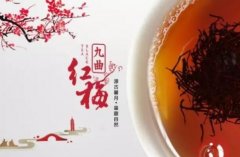Is Japanese matcha powder green tea powder the same? is matcha powder made of green tea? which one is better?
Matcha green tea powder appears to be green at first glance, but it actually has different shapes and sizes.
Green tea powder (or powdered green tea) is to crush green tea into more than 100mm 200 mesh * (75~150pm) powder by instant crushing method, to maximize the original natural green and nutritional components of tea vegetables, without any chemical additives, except for direct drinking, it can be widely added to all kinds of food, medical and health products and daily chemical products.

Matcha, the raw material of which is a kind of unrolled small tea, is covered before the tea cyanine is picked. Usually, 20-30 days before picking, Japanese tea is scaffolded with bamboo and iron wire above the tea garden, then covered with straw mats, and straw mats are also used to block the sun, with a shading rate of more than 98%. This shading treatment makes the green tea sweet without bitterness, and the color is more green.
The tea cyanine was immediately steamed on the same day, and then went directly into the dryer without kneading and drying. the dried tea vegetables in this tea-making stage are called "barren tea". After that, the barren tea is put into the freezer and stored at a low temperature below zero to increase the sweetness.
Barren tea is taken out from the above-mentioned freezer and restored to room temperature for processing, including cutting, screening and other processes, and becomes a square piece of 0.3mm, that is, rolled tea. The purpose of cutting is to cut off the petiole and clothing part of tea cabbage because of its high water content, low chlorophyll content and residual tea polyphenols (polyphenols).

When the whole tea is roughly cut into tea powder, it becomes the raw material of matcha. Grinded tea is usually stored in a teacup, and it is only taken out when grinding is needed. Because of the poor maturity of the stone mill, it will not affect the color of matcha.
Milled tea is then ground into a fine powder by natural stone grinding, which is called matcha, with a particle size of 2~20um (i.e. 680-6800 mesh).
Stone mill is a traditional equipment for crushing tea, but in modern times, it is also crushed by air flow grinder or ball mill, but its fineness can not reach the level of stone mill. And the peculiar temperature of stone mill is the last incense extraction process of matcha. Matcha milled by stone mill has the aroma of seaweed and zongcai.
Powdered green tea crushed by other methods is called factory green tea powder, or powdered green tea. As the fineness, aroma and color are different, its price and use are also completely different.

Most of the green tea powder in Japan is crushed slowly by ball mill. In China, instant crushing is mostly used, with high speed and high capacity, while Japanese matcha is mostly ground with natural stone. The three have a large area in quality.
The unpigmented green tea powder is often yellowish brown and tastes bitter.
As matcha is a very fine powder, it can float in cooked water without precipitation, and the appearance of the tea soup is bright green, which will not precipitate even if it is kept for a long time. On the other hand, the particles of green tea powder are too large to float in hot water and precipitate after a long time.
In terms of price, high-quality matcha is the most expensive and has very few seats. Because of its lack of bitterness, it can be used as "strong tea," or as "thin tea," while middle and lower-grade matcha is used as a general matcha beverage (green tea-related products, with milk sugar, etc.).
Important Notice :
前街咖啡 FrontStreet Coffee has moved to new addredd:
FrontStreet Coffee Address: 315,Donghua East Road,GuangZhou
Tel:020 38364473
- Prev

Black tea Jiuqu red plum aroma taste characteristics and efficacy taboo and function what grade in Jiuqu red plum
Jiuqu Hongmei is a kind of Chinese black tea and a kind of Kungfu Tea, which is produced in Xihu, Hangzhou City, Zhejiang Province, which is also the hometown of Longjing tea. The tea of Jiuqu Hongmei is as red as red plum, so it is called Jiuqu Hongmei. Nine zigzag means zigzag, is the name of a stream; red means red; beauty means plum. Jiuqu Hongmei is the only black tea among 28 kinds of famous teas in Zhejiang Province. Jiuqu Hongmei and Longjing
- Next

The Kenyan authorities' epidemic worsened, and the national curfew extended again affected coffee exports in tourism.
Kenyan authorities extended curfew Kenya time on August 18, 2021, the presidential palace issued a message that due to the failure of the public to strictly comply with various epidemic prevention measures, coupled with the strong transmission capacity of Delta mutant strains. The number of people infected with COVID-19 has increased across the country, with COVID-19 testing positive for more than 20 per cent in 18 counties. In order to contain the further deterioration of the epidemic, President Uhuru Kenyatta (Uhuru Kenyat)
Related
- The milk tea cup becomes smaller?! Overlord Tea Girl launches a new "Return to Yunnan" series
- Accused of selling counterfeit and high-priced coffee beans! Well-known boutique coffee brand "Oukelao" bowed and apologized!
- How to make espresso dumplings? Can I eat coffee and glutinous rice balls together?
- Save the unformed and stagnant powder cakes in one second! What is the problem with stagnant water in the powder bowl of the espresso machine?
- What does hand-brewed coffee stop mean? Why is it not recommended to make coffee by hand?
- Is it normal to smell like coffee? Why does coffee smell like alcohol? What's wrong with the strong smell of cold extract ice dripping ice brewed coffee?
- How to solve the problem that hand-brewed coffee extraction takes too long? Why is the water flowing so slowly when making coffee?
- The main points of making Australian white coffee, the proportion details, how does Australian white properly foam and blend the flowers?
- Can ice water make cold extract coffee? What is the difference between room temperature water and ice water for making cold coffee?
- What milk is best for making latte and white Dirty coffee? What is the difference between different brands of fresh milk and pure milk for making coffee?

